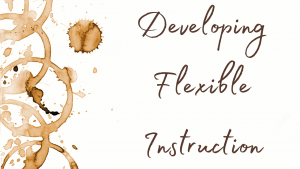
Engagement, Reinforcement, Achievement, & Community
For our purposes, let’s divide teaching and learning strategies into four broad categories. It will give us some common language and naming conventions that will help you find what you’re looking for easier, sort of a decoder ring.
Engagement
Engagement strategies are pretty straightforward. These are things to grab students’ attention, get them thinking, and/or get them participating.
One simple example would be to pose an intriguing question to students at the beginning of a lesson, or better yet, beforehand.
Reinforcement
As the name implies, these are strategies that help reinforce what students have learned. These are some of the simplest strategies to implement and can have a big return on fairly little investment.
Thought boxes can be used as reinforcement by calling out information from a previous lesson where it ties into new information in the current lesson.
Achievement
These are strategies that take engagement and reinforcement to the next level. They’re strategies drive students to push a little harder or dig a little deeper. They’re also a little more labor-intensive for faculty. Don’t let that scare you off. These strategies really pay off in the long run.
Letting students resubmit work until they have achieved mastery is an achievement strategy.
Community
Even the best strategies can fail without a solid relationship between students and instructors. This doesn’t mean you have to be everybody’s best friend but it is important that students know you care. A healthy relationship is essential for learning. Community-building strategies can be simple or complex and you should only utilize strategies that you can facilitate sincerely.
